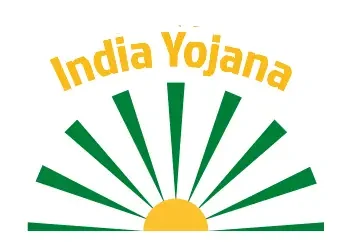PM Kisan Yojana and Other Schemes Comparison
The government of India has taken multiple steps to empower the farmers to promote the agriculture industry. Analyzing the PM Kisan Yojana and Other Schemes, Comparison-details helps evaluate launched schemes’ effectiveness, efficiency, and impact. Moreover, it also helps find the best practices to allocate and optimize the budget in favor of beneficiaries.

The government launched multiple schemes for different domains for the country’s prosperity.
- Some schemes are directly funded by the Central government and are progressive.
- However, other schemes are state-based, and the state releases the funds to the beneficiaries.
Although each has a distinctive objective and coverage, some are interlinked with each other and have exponential advantages. Here, we will compare PM Kisan Yojana to multiple active agriculture-related schemes in India.
PM Kisan Yojana and Other Schemes Comparison
PM Kisan Yojana
PM Kisan Yojana is a direct income support scheme for small to medium-level farmers all over India. The policy was launched in February 2019 by the 6000 INR disbursed in 3 equal installments to the Kisan. Farmers can use the amount to purchase agricultural goods, seeds or fertilizers. The scheme aims to aid farmers in meeting their agricultural needs and improving their livelihood.
However, the eligibility criteria state that only farmers with 2 hectares of land are eligible to become a beneficiary of the program. While the central government coordinates the execution, state governments help identify eligible farmers and facilitate the transfer of funds. This funding model allows for uniformity and consistency in farmers’ disbursement of financial assistance nationwide.
Rythu Bandhu
Unlike PM-KISAN, Rythu Bandhu focuses on a specific state, supporting farmers owning agricultural land in Telangana. Rythu Bandhu, a scheme implemented in Telangana, provides financial assistance of 10,000 INR in 2 installments to farmers for investment in agriculture and meeting input costs.
Moreover, the state government funds the scheme, reflecting its commitment to agricultural welfare. In terms of implementation, the state government takes charge, ensuring local expertise is leveraged effectively.
Annadata Sukhibhava
Annadata Sukhibhava is also state oriented scheme. It was implemented in Andhra Pradesh and aimed to provide financial assistance to farmers, supporting their livelihoods and lowering the burden of agricultural expenses.
However, like Rythu Bandhu, the scheme also operates within a specific state, covering farmers owning agricultural land in only Andhra Pradesh. A PM Kisan beneficiary will have 9000 INR, and a non-beneficiary will have 15000 INR annually.
The state government funds the program and oversees its implementation, customizing the strategy to tackle local challenges effectively.
KALIA Scheme
The KALIA scheme in Odisha delivers financial support to landless agricultural labourers, small and marginal farmers, and insecure farming households.
While PM-KISAN exclusively targets farmers, KALIA has a broader scope, encompassing various categories of farming households in Odisha. The state government funds the scheme, responsible for its implementation and disbursement of funds.
Rashtriya Krishi Vikas Yojana (RKVY)
RKVY and PM-KISAN are two schemes that focus on different aspects of agricultural development and farmer support. RKVY targets the overall growth of agriculture and allied sectors by providing resources for planning, infrastructure development, technology adoption, and market linkages.
On the other hand, PM-KISAN’s primary objective is to provide direct income support to farmers, helping them meet their agricultural expenditures and living standards.
Funding-wise, RKVY relies on both central and state government funding, whereas the central government entirely funds PM-KISAN.
Here is a quick comparison of all active agriculture-related schemes in India.
| Scheme Name | Objective | Coverage | Amount (per beneficiary) | Year Launched | Funding |
|---|---|---|---|---|---|
| PM-KISAN | Direct income support to farmers | All farmers across India | ₹6,000 per year | 2018 | Central Government |
| Rythu Bandhu | Financial assistance for cultivation expenses | Farmers in Telangana | Variable | 2018 | State Government |
| Annadatha Sukhibhava | Financial support for cultivation and investments | Farmers in Andhra Pradesh | Variable | 2019 | State Government |
| KALIA Scheme | Financial and livelihood support for farmers | Farmers and landless households | Variable | 2018 | State Government |
| Rashtriya Krishi Vikas Yojana | Accelerate agricultural development | Farmers and agriculture activities | Varies by project | 2007 | Central and State Govt |
| Pradhan Mantri Fasal Bima Yojana | Crop insurance coverage and support | Farmers across India | Variable | 2016 | Central and State Govt |
| National Agriculture Market (eNAM) | Create a unified national market for agricultural commodities | Farmers, traders, markets | NA | 2016 | Central Government |
| Soil Health Card Scheme | Promote balanced use of fertilizers and soil health | Farmers across India | NA | 2015 | Central and State Govt |
| Pradhan Mantri Kisan Sampada Yojana | Develop modern infrastructure for agro-processing | Farmers, agribusinesses | NA | 2016 | Central Government |
Other Important Articles:
Conclusion
In conclusion, comparing agricultural schemes in India to PM, Kisan Yojana highlights the government’s commitment to supporting farmers and promoting agricultural development. PM-KISAN stands out as a vital initiative, providing direct income support to farmers nationwide.



